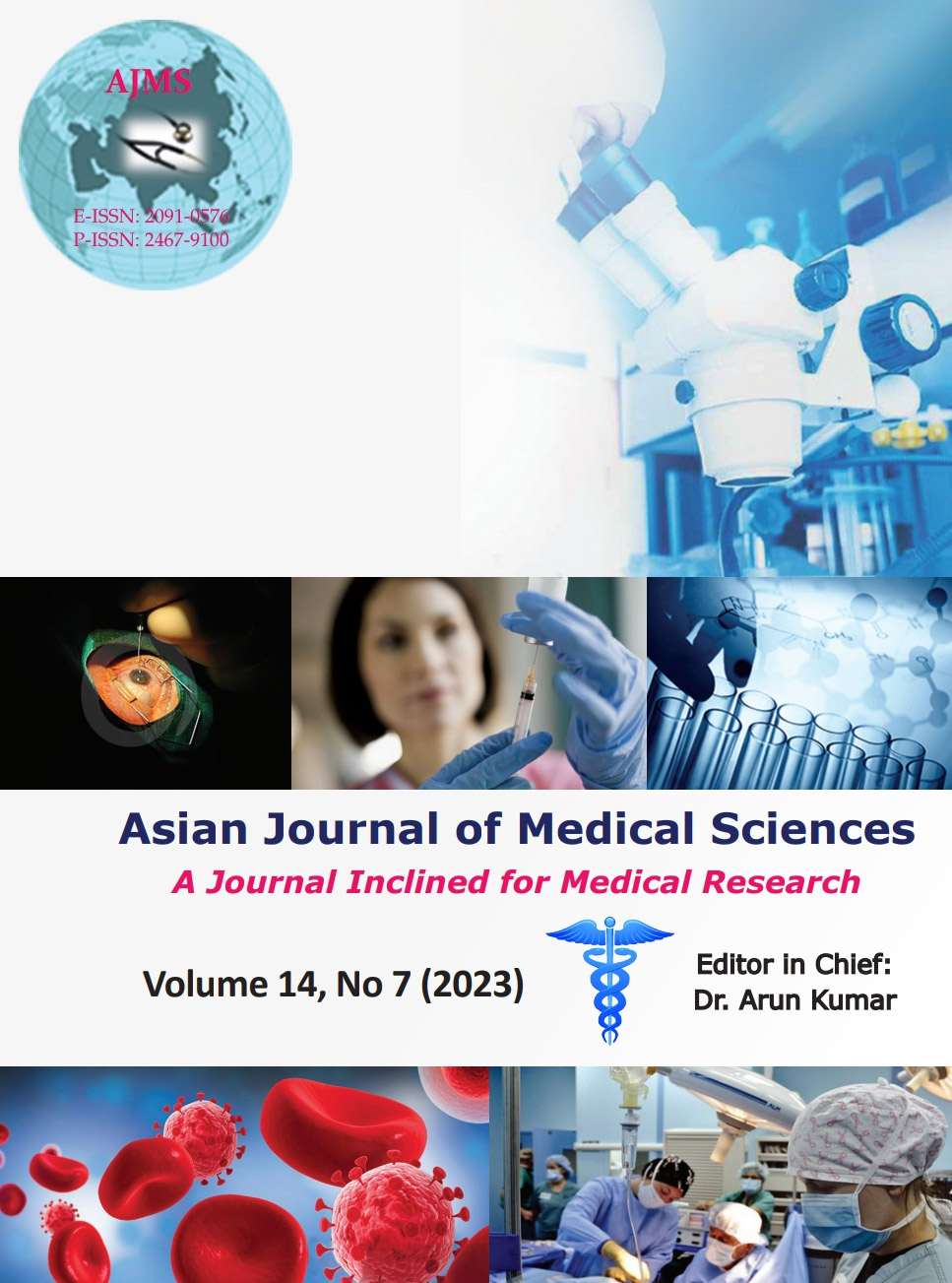A study of etiology and management of epistaxis in a tertiary center in Western Uttar Pradesh
Keywords:
Epistaxis; Nasal endoscopy; Nasal packing; CauterizationAbstract
Background: Epistaxis is a common condition but with diverse etiology dependent on geography, season, climate, and demography.
Aims and Objectives: To describe the demographic, clinical, and etiological profile and management strategies of epistaxis cases at a tertiary center in U.P. (west).
Materials and Methods: Patients were identified from the emergency and outpatient department, and their demographic and clinical details were noted. Local examination was performed, and necessary investigations were carried out. Management strategies were noted. Duration of hospital stay and mortality, if any, was documented. Descriptive analytics were used. Data were represented as numbers and percentages, mean±standard deviation, and median.
Results: A total of 189 epistaxis patients were enrolled in the study. The mean age of patients was 32.89±17.92 (range 1–85 years). The sex ratio (M: F) was 2.71. Majority of patients presented to the emergency department (60.3%) within 1 day (64.6%), had single episode (66.7%), the presence of old clot (72%) and the anterior location of bleeding (91.5%). 119 (63%) cases required admission. Nasal endoscopy and computed tomography scan were performed in 49 (25.9%) and 24 (12.7%) cases, respectively. The most common etiology was trauma (49.2%), followed by idiopathic cause (14.8%), hypertension (12.7%), and others. Nasal packing and cauterization were required in 16.4% and 15.9% of cases, respectively. Surgery was required in 5 (2.6%) cases. A minuscule percentage of cases required blood transfusion. There was no mortality.
Conclusion: Epistaxis is a common emergency with males predominating over females. Causes are varied. Most patients can be managed conservatively with favorable outcomes if timely intervention is done.
Downloads
Downloads
Published
How to Cite
Issue
Section
License
Copyright (c) 2023 Asian Journal of Medical Sciences

This work is licensed under a Creative Commons Attribution-NonCommercial 4.0 International License.
Authors who publish with this journal agree to the following terms:
- The journal holds copyright and publishes the work under a Creative Commons CC-BY-NC license that permits use, distribution and reprduction in any medium, provided the original work is properly cited and is not used for commercial purposes. The journal should be recognised as the original publisher of this work.
- Authors are able to enter into separate, additional contractual arrangements for the non-exclusive distribution of the journal's published version of the work (e.g., post it to an institutional repository or publish it in a book), with an acknowledgement of its initial publication in this journal.
- Authors are permitted and encouraged to post their work online (e.g., in institutional repositories or on their website) prior to and during the submission process, as it can lead to productive exchanges, as well as earlier and greater citation of published work (See The Effect of Open Access).




